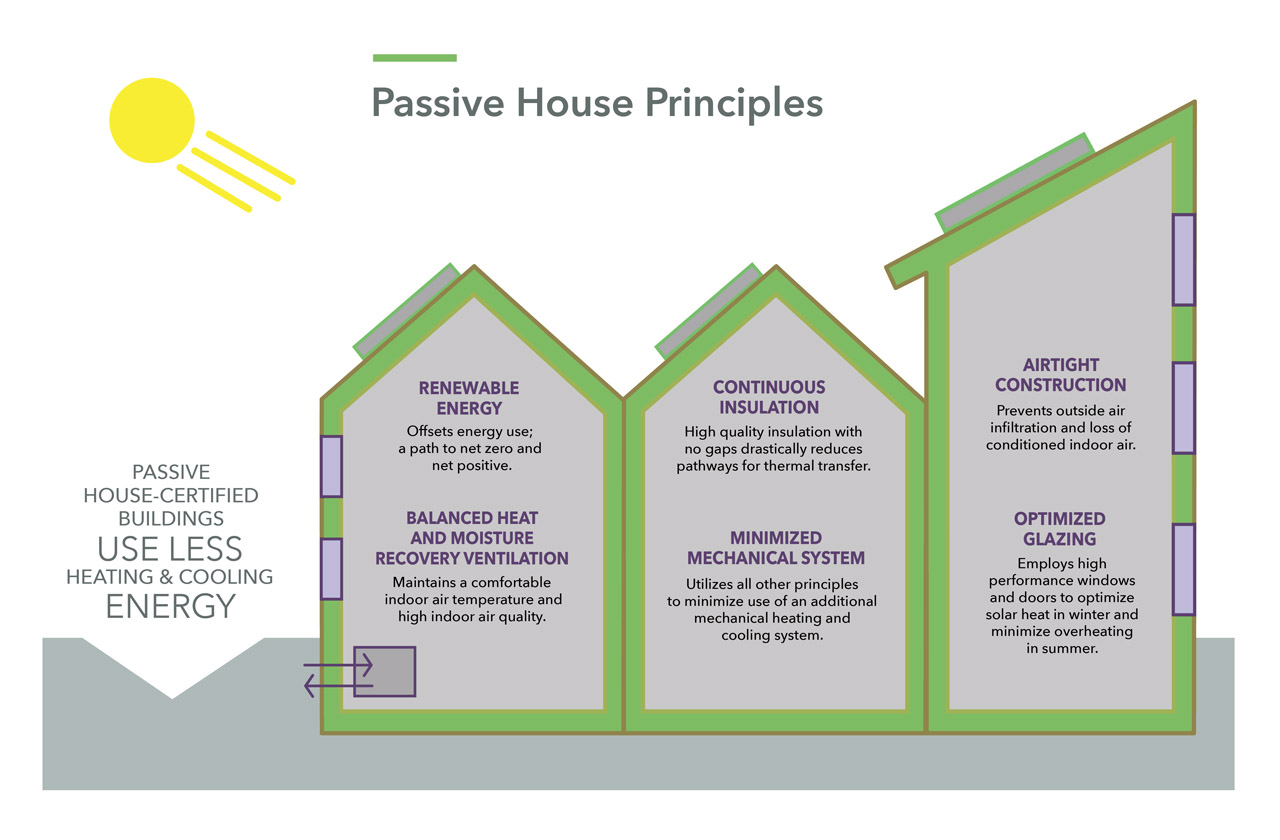PASSIVE HOUSE CONSTRUCTION
Facilitating growth of the passive house construction workforce

The shortage of skilled labor for Passive House construction can be attributed to several factors, each of which contributes to the challenge of finding individuals with the necessary expertise in this specialized field. Here’s a detailed explanation of why there is a lack of skilled labor for Passive House construction:
Specialized Knowledge and Training: Passive House construction requires specialized knowledge and training that goes beyond traditional building methods. Many construction workers, architects, and engineers may not be familiar with the principles and techniques required for construction. They need to learn and adapt to these new concepts, which can be time-consuming and may require additional education or training.
Lack of Awareness: Construction is not as widely known as conventional building methods. Many construction professionals and workers may not even be aware of the standard, let alone understand its intricacies. This lack of awareness can make it challenging to attract individuals to this field.
Complexity and Stringent Standards: Construction involves complex design principles and stringent energy performance standards. Achieving these standards demands a deep understanding of building science, energy modeling, and airtight construction techniques. Many workers may find the requirements daunting and may be reluctant to invest the time and effort needed to acquire the necessary skills.
Investment in Tools and Equipment: Construction often necessitates the use of specialized tools and equipment, such as blower door tests, heat recovery ventilators, and high-performance insulation materials. Contractors and workers need to invest in these resources, which can be expensive. This upfront cost can act as a barrier to entry for smaller construction companies and individual workers.
Limited Demand: The demand for this construction is not as widespread as traditional building methods. As a result, construction workers and contractors may perceive the effort and expense required to gain accredited expertise as a risky investment since they might not have a steady stream of projects that require these skills.
Risk Aversion: Many construction professionals are risk-averse and may be hesitant to adopt new methods and standards, especially if they are unsure about the return on investment. Passive construction can be perceived as riskier due to its unfamiliarity.
Institutional Inertia: The construction industry, like many other sectors, can be resistant to change. Established construction companies may be reluctant, as it involves a significant shift in their processes and business models.
Lack of Training Programs: Training programs and educational resources are not as widely available as they are for traditional construction. This gap in training opportunities makes it challenging for individuals to acquire the necessary skills.
Certification and Accreditation Challenges: Becoming a certified professional often involves a significant commitment of time and resources. The certification process can be rigorous, and not all individuals or companies may be willing or able to meet these requirements.
Market Maturity: The market is still emerging in many regions, and it may take time for a critical mass of projects to create a strong demand for skilled labor. Until then, it can be difficult for construction professionals to justify investing in Passive House expertise.
To address the shortage of skilled labor for Passive House construction, efforts should be made to increase awareness, provide accessible training programs, and incentivize the adoption of energy-efficient building practices. Governments, industry associations, and educational institutions can play a role in facilitating these changes to encourage the growth of the Passive House construction workforce.
more information on the construction techniques raised in this article can be found on the institutes website here.

